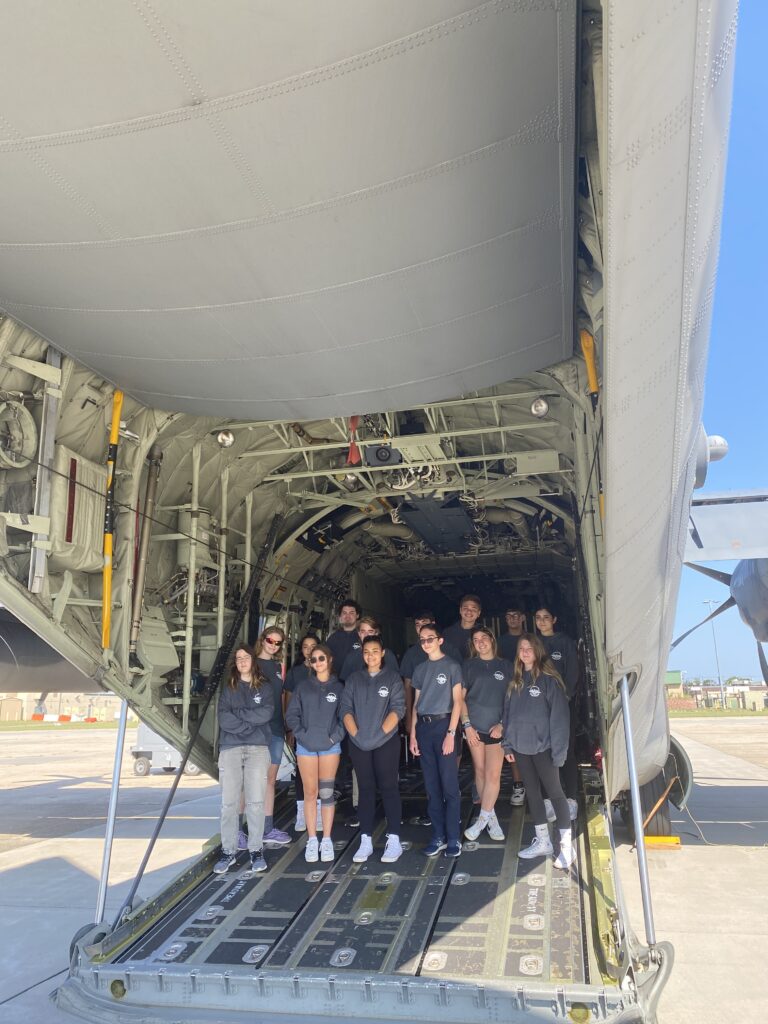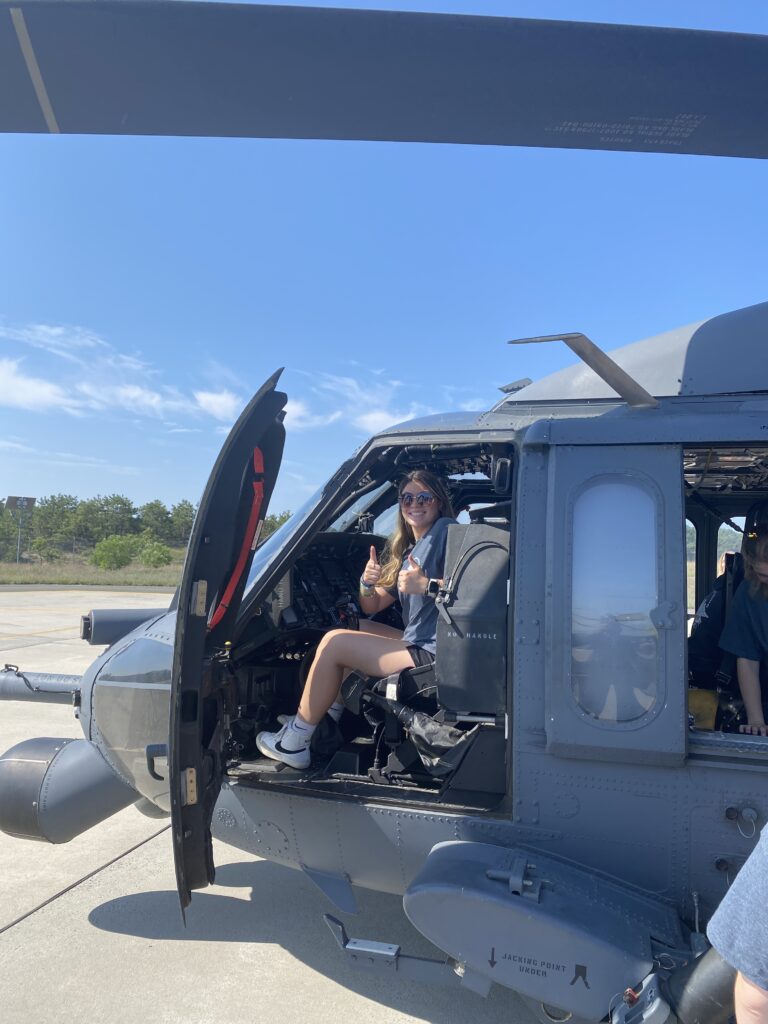While Long Island is known for its many hidden gems – the Island itself is often considered one – most residents are aware of these and it’s up to the tourists to discover the nuances of our home.
Suffice it to say, it’s unusual for residents, many of whom are born-and-raised Long Islanders, to discover hidden gems of the place they have called home for so long.
One unique characteristic of the Island is the Francis S. Gabreski Air National Guard (ANG) Base in Westhampton Beach, just ten minutes south of Riverhead. A mere mention of this base usually results in a local’s surprise that such an asset exists in relatively plain sight.
However, Gabreski is not just an Air National Guard Base; it’s also the home of the 106th Rescue Wing (RQW), who provides worldwide combat search and rescue coverage for the U.S and its allied forces and also provides peacetime humanitarian search and rescue support in addition to disaster relief for federal and state authorities. The brave men and women of the base fulfill the roles of pararescuers, pilots, firemen, mechanics, and logisticians who successfully carry out operations that can result in a matter of life and death when called upon at a moment’s notice. From rescuing workers from flaming cargo ships, to providing hurricane relief and evacuation to the Caribbean islands, the 106th RQW is responsible for so much humanitarian work, it’s difficult to believe that many Long Islanders are unaware of this base’s presence.
Members of the 106th were also forever immortalized in Wolfgang Petersen’s 2000 film, The Perfect Storm, which displayed the efforts of the 106th RQW to save members of the Andrea Gail, a fishing boat that was caught in the nor’easter of 1991.
Most recently, the 106th RQW participated in the search for the submersible Titan, which went missing in June on a dive to survey the wreckage of the Titanic.
The Messenger received the unique opportunity in early June to tour the base and some of its assets, including the HC-130J Combat King II and HH-60 Pave Hawk. You can read our story on that visit here: https://messengerpapers.com/2023/06/these-things-they-do-so-that-others-may-live-an-inside-look-at-the-106th-rescue-wing/
Over the weekend, The Messenger was invited back to Gabreski to survey the base’s inaugural Science, Technology, Engineering, Mathematics (STEM) camp for middle and high schoolers, which culminated in flights on both aircrafts.
The purpose of the STEM camp was not only to offer inside looks at possible career opportunities for high schoolers, but to instill in the young attendees the purpose and vision of the U.S. Air Force Pararescue, giving credence to their motto: “These things we do that others may live.”

The Messenger sat down with Colonel Glyn Weir to discuss the program’s conception, planning, and contents, as well as the comprehensive approach to teaching high school students the responsibilities of the RQW from a STEM perspective.
“We’re doing a pilot program for Department of Defense dependents, a target population for the Department’s overall STEM program. It’s less risky and doesn’t require legal agreements and liabilities with high schools. This was more than a year in the making to develop the curriculum and get everyone from around the base to team up and create it.”
Colonel Weir also discussed the possible near-future of the camp:
“The program had twenty-four kids and over forty volunteers. We’re looking to reach out to local high schools and possibly set a capacity of thirty to forty kids in the future. We might pick those schools based on certain factors, such as a propensity for the military and military-related work. We are building a budget and attendance will be competitive, but the experience students can receive here is so unique, you really can’t compete with any other type of STEM camp.”
Colonel Weir also stresses that the intention of the camp is mostly community outreach, rather than recruiting.
“It’s more for STEM and mission awareness. If they happen to ask and want to pursue something, we’ll have someone who’s available to talk to them, but I’m careful to maintain the community outreach mentality. If you start blending into the recruiting, you lose your message.”

Colonel Weir also mentioned that the twenty-four students in attendance made up a significant geographic spread, ranging from parts of Connecticut, and from Queens to Southampton and the North Fork.
Colonel Weir has been at 106th RQW since 2003 and lives with his family in CutchoguThe camp ran from Thursday to Sunday, with the first three days dedicated to different sections that encompass a day in the life at Gabreski, ranging from mission planning and simulation workshops, to tours of the facility and absorbing the culture and atmosphere of the 106th RQW.
In addition to the Pararescue motto, STEM camp attendees learned the crucial necessity of fast-paced, well-made decisions, contributing to the fact that the RQW typically only has “one hour” to save a life, often referred to as the “golden hour.” The facilitators ingrained in the students that the primary responsibility of the RQW is “saving lives.”
Perhaps the most intensive workshop occurred on the third day of camp, when the students participated in a simulated emergency and fulfilled different roles within the Tactical Operations Center (TOC). These roles included the TOC Chief, who is charged with receiving support requests and granting execution of requests; TOC Radio, who communicates with available assets, such as aircraft, and tracks the mission status; TOC Intel, who plots missions points gathers data to execute the mission; TOC Logistics, who verifies the validity of planned course of action with supplies and equipment and organizes outside support; and TOC Operations A3, who plans all courses of action for the mission.
The students each took on these different roles in a fast-paced workshop accurate to true search and rescue procedures. The simulation scenario consisted of an earthquake in Estonia, for which the students were tasked with receiving intelligence and requests for support, dispatching assets, communicating with the rescue team, and managing logistics to save the patients’ lives within that “golden hour.”
The TOC chief received requests over the phone and voiced these needs to her team, while the TOC Radio operator spoke in military shorthand over the radio equipment to dispatch who kept her updated on the statuses of each asset. TOC Intel simulated the tracking of assets and timings of dispatch, arrival, and contact with movable labeled notes on a whiteboard. Finally, the TOC Logistician used his math skills to plot which nearby airbase was not only appropriate for the medical care required, but also one that could be reached with the aircraft’s remaining fuel levels within the “golden hour.”
Technical Sergeant (TSgt) Joseph Graziano, Riverhead, said to the students after the workshop: “You can see how overwhelming it is dealing with just one call over the course of a half hour. It’s possible for us to see a constant stream of calls over a sixteen-hour day.”
Sunday morning saw the camp culminate in the unique opportunity to take flights aboard the HC-130J Combat King II search-and-rescue plane the HH-60 Pave Hawk helicopter. Captain Daniel Quarto of Mahopac and Senior Airmen Bailey Sullivan of Nesconset instructed the students on what to expect from the helicopter and how to follow nonverbal instructions while wearing ear protection. Quarto and Sullivan guided the students out and ensured the safety of all on the craft.
Lieutenant Colonel Erik Bulger of West Islip coordinated the groups and boarding for the C-130. Bulger had earlier demonstrated the use of maps, wind patterns, and mathematics to determine how the C-130 is typically routed and geographic problems can be solved mid-air.
The helicopter flight extended along the South Shore towards Southampton and circled back to the Gabreski.
The C-130 flight extended out to Montauk Point, with the famous lighthouse clearly visible, and cruised over Gardiner’s Island, Shelter Island, and Plum Island to follow the North Fork back to the base.
Both flights not only offered fantastic views of Long Island, but also the maneuverability and technology of each aircraft. A new respect for the science, technology, engineering, and mathematics that goes into making just one of these crafts get off from the ground was certainly found that day.
The camp was bookended by a barbecue lunch at the pavilion and an awards ceremony. Each student received a certificate of completion which can be contributed towards certain hours of merit for high school graduation. Individual excellence awards were also given to some attendees.
The Messenger congratulates Francis S. Gabreski Air National Guard Base on a successful inaugural STEM camp. The Messenger would also like to thank Staff Sergeant Kevin Donaldson of Brooklyn for coordinating the timeframe of the weekend and for personally guiding us around the base.
The Messenger would finally like to thank the men and women of the 106th RQW for their brave, unparalleled service every day.







